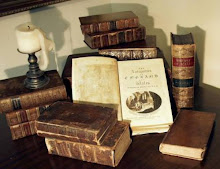The thirty-second book we read this year is The Jesus Mysteries: Was the "Original Jesus" a Pagan God?, by Timothy Freke and Peter Gandy.
This is an intriguing book that explores the beginnings of Christianity. Since the publication of the Nag Hammadi texts, there has been a wealth of new theories concerning Jesus and the religion he is said to have founded. In the Information Age it has become impossible for any organization to suppress knowledge and opinion and dissent. Writings that had for centuries been denied, hidden, and destroyed by the Church present quite a different view of the Christian religion and its tradition.
The major thrust of the authors' premise is that of a Gnostic foundation of Christianity. The Catholic and Protestant religions are offshoots of Christianity that have been most successful in appealing to the masses. Though they have been forced nearly out of existence, the Gnostics comprised a majority of believers at the time the religion was being formed. They did, and still do, understand that the New Testament was simply a rewriting of ancient pagan myths. The Jesus Mysteries Thesis is that Christianity is not a new and unique revelation, but a Jewish adaptation of the perennial Pagan mystery religion. Each tradition consisted of Outer Mysteries, which were myths and rituals of common knowledge, and Inner Mysteries, which were sacred secrets known only to initiates. At the heart of the Mysteries has always been a dying and resurrecting godman, variously known as Osiris, Dionysus, Attis, Adonis, Bacchus, Mithras, and, of course, Jesus.
The first chapter makes explicit the commonality of each of these myths. The composite Osiris-Dionysus was regarded as God made flesh, the savior, and the Son of God. His father was God and his mother was a mortal virgin. He was born in a cave on December 25 before three shepherds. He offered his followers the chance to be born again through the rites of baptism. He turned water into wine at a marriage ceremony. He rode into town on a donkey as people honored him with palm leaves. He died at Eastertime as a sacrifice for the sins of the world. After his death, he descended to hell, and three days later rose from the dead to ascend to heaven. His followers awaited his return as the judge during the Last Days. His death and resurrection were celebrated by a ritual meal of bread and wine, which symbolized his body and blood. The historical biblical accounts of Jesus sound strikingly similar to the myths of Osiris-Dionysus.
The authors rely heavily on various texts that were never canonized by the fledgling Church such as alternative gospels, ancient Greek and Roman works, Egyptian and Jewish texts. They follow each point back in time, examining the ancient classics, the formative Gnostics, the early Church fathers, and early Church philosophers and critics who were on the scene as the religion was being born. They rearrange the books of the New Testament in the order they were written and demonstrate that it is not so much a history of actual events as a history of the evolution of Christian mythology. The four canonical gospels contain so many contradictions and inconsistencies that we are hard pressed to believe they are each historical accounts of actual events, or that they are the Divine Word, for what God would be so confused and confusing?
What, one might wonder, is the Inner Mystery? If one is looking for a concrete explanation, it will not be found in this book. Perhaps one of the best places for an answer to this question is the Apocryphon Iohannis, the preeminent Gnostic Gospel. In general terms, the mysteries lead one to the revelation of an eternal light indwelling life, a divine image of the soul, a salvific experience of transcendence. Though it is universal, it is also highly personal, and therefore has always been a threat to organized religion.
This book has changed our outlook on western religion. We had always felt that the Bible, and in particular the New Testament, was filled with stories that, though not eye-witness accounts meant to be taken literally, had a basis in historical events. Any number of books offer a convincing picture of the historical Jesus, stripping the gospels down to their most basic units of truth. Now we see that it is more likely the Bible is pure myth in the tradition of the beliefs of man since belief began. Instead of a divine experience that begins in history with the life of one man, we can now experience the divine presence that has been known to man since before history. And, somewhat surprisingly, the myth of Jesus makes belief easier than the literal truth of Jesus.
We would highly recommend this book to anyone with an open mind about religion, anyone who is a believer of critical thinking, anyone who has ever felt at all uncomfortable with a top-down religion. This book contains copious notes, so one may examine for oneself the evidence for the authors' claims. A loving God desires us to know and experience divinity on our own, not simply accept what we are told. Only a despotic God would demand us to accept Him on faith alone.
Thursday, September 13, 2007
Subscribe to:
Post Comments (Atom)


No comments:
Post a Comment